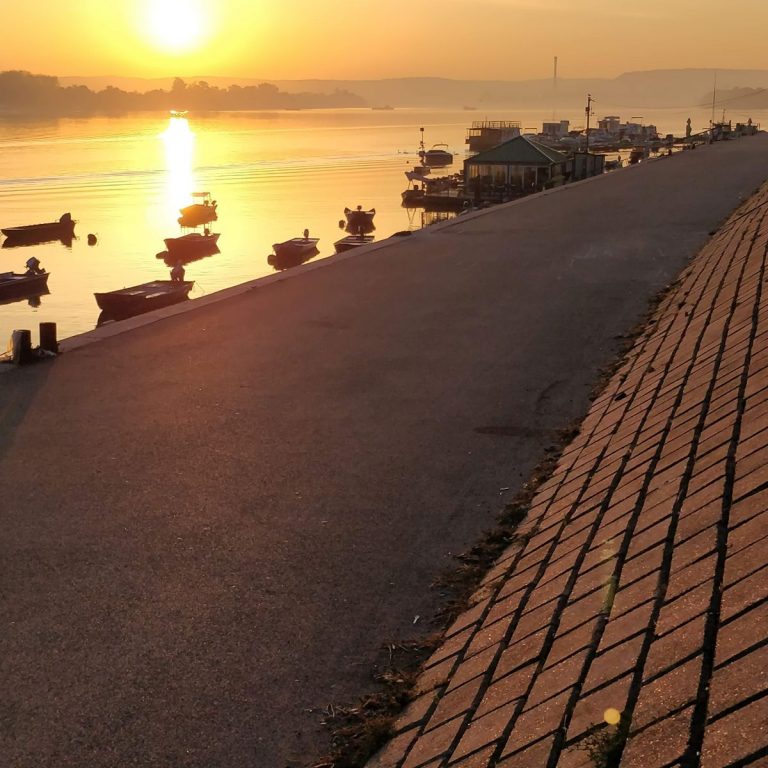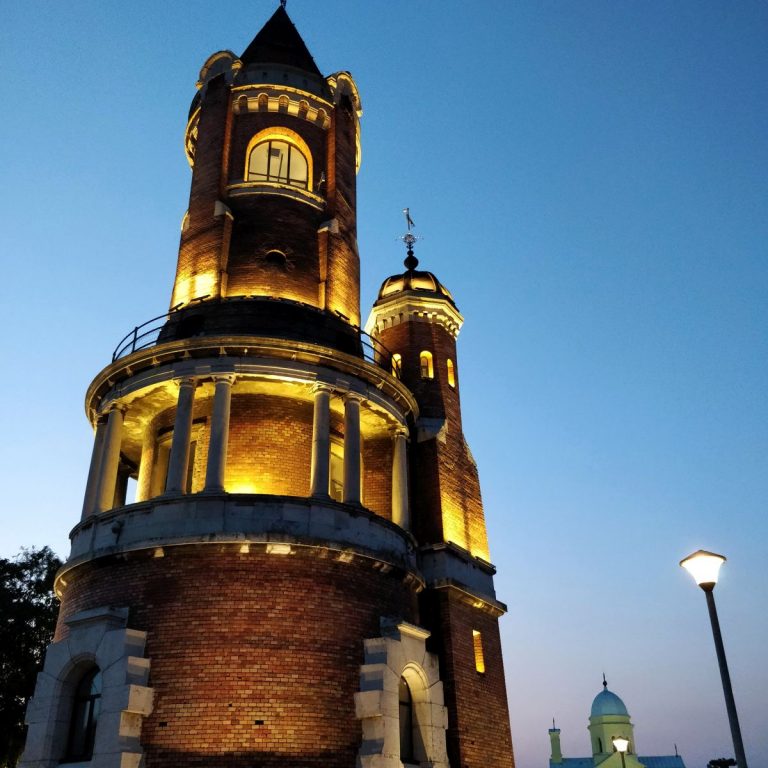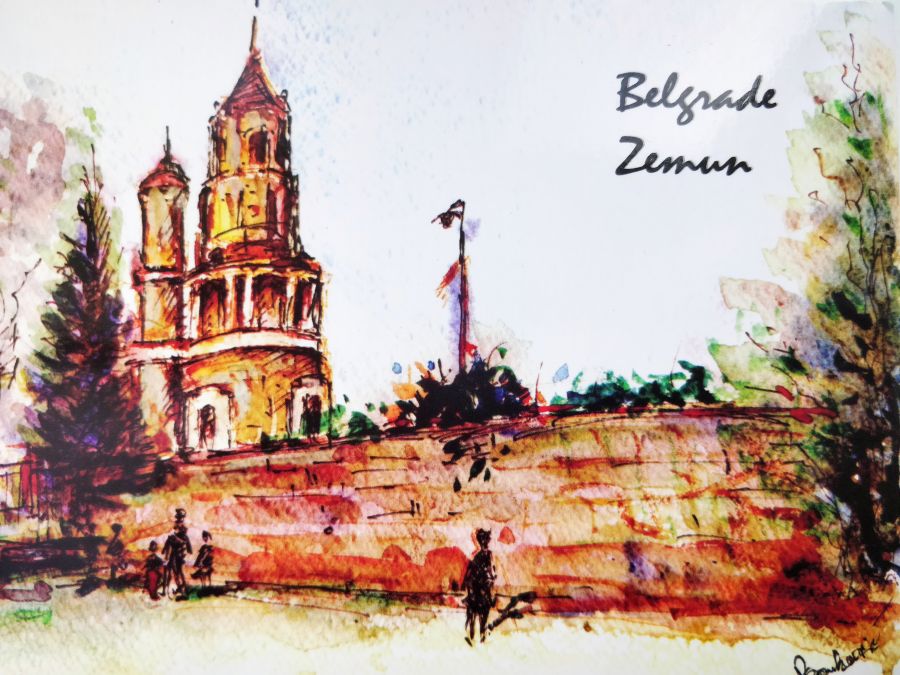Trzeba w końcu powiedzieć parę słów o Zemunie.
Gdy za pierwszym razem pojawiliśmy się w Belgradzie, to okazało się, że no niezupełnie. Wylądowaliśmy bowiem nieświadomie w takiej dzielnicy tego miasta, która wcale go nie potrzebuje, bo sama sobie wystarcza. Mieszkańcy są dumni z tego, że są stąd (stela?), po czym potrafią przypomnieć człowiekowi, ile to lat nie przekraczali mostu. Oto właśnie Zemun.

Krótko rzecz ujmując, Zemun leży nad Dunajem, a od Kalemegdanu (belgradzkiej twierdzy) oddziela go wpadająca do „pięknego modrego” Sawa. Przez wieki był ostatnim bastionem Austro-Węgier, a dalej były już tereny Imperium Osmańskiego. Dopiero po II wojnie światowej Zemun został administracyjnie wcielony do miasta stołecznego. Historycznie można by więc pewnie poszukać analogii z Podgórzem, albo i Cieszynem. Nasuwają się komuś jakieś jeszcze może?
Dzisiaj w każdym razie przypomina Kazimierz tak sprzed 15 lat. Najlepsze trzy rzeczy tutaj to: (1) kej, czyli nabrzeże z bulwarem oraz klubami wioślarskimi i ich knajpami wszelkiego typu, (2) pijaca, czyli plac targowy, gdzie ajwar, papryka i paradajzy, no i (3) wzgórze z wieżą Gardoš, bo widoki.
Z Magdą i Andrzejem są szanse, że znów się zobaczymy na Božić. Może nawet jaką kolędę się zaśpiewa? No aha i będzie to nasze grudniowe Boże Narodzenie, mimo że Serbowie mają je po prawosławnemu 7 stycznia. A my wtedy już pewnie z powrotem będziemy w drodze i w sumie nie wykluczamy, że do tu opisanego miejsca.
PS. Prawosławni też mają kolędy?
It is high time to say a few words about Zemun.
The first time we arrived in Belgrade, it turned out that it wasn’t quite so. We ended up unknowingly in a district of Belgrade that doesn’t need it at all, because it could be a city of its own (it used to be one). Residents are proud that they are from here. They are able to recall how many years they have not crossed the bridge to the other side. That’s Zemun.
In short, Zemun lies on the Danube and is separated from Kalemegdan (the Belgrade fortress) by the Sava river, that flows into the famous blue one. For centuries it was the last bastion of the Austro-Hungarian Empire, because the Ottoman Empire was just across the river. Only after World War II Zemun was incorporated into the capital city. Historically, one could probably look for analogies with Podgórze or Cieszyn in Poland. Any more ideas from other parts of the world?
Today, in any case, it reminds us of Kazimierz from 15 years ago.
The three things that we love about Zemun are: (1) kej, or wharf with a boulevard and rowing clubs and their pubs of all types, (2) pijaca, a market square, where ajvar, paprika and paradajz are sold, and (3) a hill with the Gardoš tower, because of the gorgeous views.

There is a chance that we will see Magda and Andrzej for Božić. We may even sing a carol or two, who knows? Oh, and it will be our December Christmas–the Serbs celebrate it the Orthodox way on January 7. We will probably be back on the road then and we do not rule out that to the place described here.
PS. Do the Orthodox have carols too?
